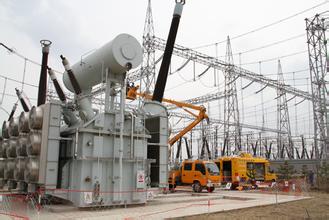Foundation Preparation:
Transportation and Placement:
Attachment Installation:
Connection Work:
Inspection and Testing:
Electrical Testing:
Oil Sample Testing:
Pre-Operational Checks:
Trial Operation:

Before the installation of transformer, confirm the location and quantity of embedded parts according to the drawings, wiring according to the requirements of equipment installation, and necessary treatment of the foundation surface; check whether the shape size of transformer conforms to the drawings, confirm the net weight of transformer, measure the size of lifting position, make lifting rigging, and compact the running lines of equipment and crane; Walking track, etc.
When lifting transformers, special attention should be paid to protecting the overlapping pile heads and porcelain bottles of transformers. The necessary bandage protection should be carried out in the places where the crane contacts with the equipment to prevent the damage of the equipment. After the crane is stressed, check whether the center of gravity of the hook and the equipment is consistent, and adjust it. When the equipment is towed, the hand-pulled hoist installed in the transformer room is hung on the towing Jack rope at the bottom of the transformer. The transformer is slowly pulled into the transformer room along the track by the hand-pulled hoist, and the necessary cooperation is carried out by the crane during the towing process. After loosening the hook of the crane, the transformer is slowly dragged onto the track and put in place.
When installing transformers, special attention should be paid to check whether the high-voltage wire package is damaged or displaced, whether the high-voltage insulator is rubbed or damaged, and whether the humidity control devices, including humidity display instruments, are complete. During construction, no sundries are allowed to fall into the transformer barrel. The main iron core and shell are grounded reliably. The working grounding section should meet the requirements of the code, at least not less than the section of the main grounding line in the transformer substation. Transformers should be positioned in the direction of high and low voltage sides, and must not be mistaken. Transformer body should be placed horizontally. The tolerance error of installation horizontality is 2, and the tolerance error of perpendicularity is 1.5. According to the requirements of the transformer factory, the vibration isolator of the transformer is installed after the transformer is in place, and then the on-load voltage regulator, temperature measuring device, control box and other accessories are installed.After the installation of transformer is completed, all fasteners and connectors should be checked before operation. Whether auxiliary devices such as wet control equipment attached to transformer are installed correctly or not. In order to check whether the transformer is in good condition, it is necessary to adjust the test according to the specifications and manufacturer's instructions. Each test is completed in accordance with the prescribed method. All instruments used in the test should be within the validity period of the test, and the test results should be recorded in the test report.
In short, the debugging of the transformer is a complex and important task, and it needs to be operated in strict accordance with the specifications and standards to ensure the safe and reliable operation of the transformer. Through the introduction of this article, we can see that transformer debugging is not only a technical job, but also a task that requires a high sense of responsibility and rigorous attitude. I hope this article can provide some valuable reference for technicians working on power systems, so that they can avoid common mistakes and improve the quality of their work in actual operations. In the future, with the advancement of science and technology and the increase in power demand, transformer debugging technology will continue to develop and improve, providing a stronger guarantee for the safe operation of the power system. Through continuous learning and accumulation of experience, technicians will be better able to cope with various challenges encountered during the commissioning process and promote the sustainable development of the power industry.
Kingrun Transformer Instrument Co.,Ltd.


More Transformer Testers from Kingrun
